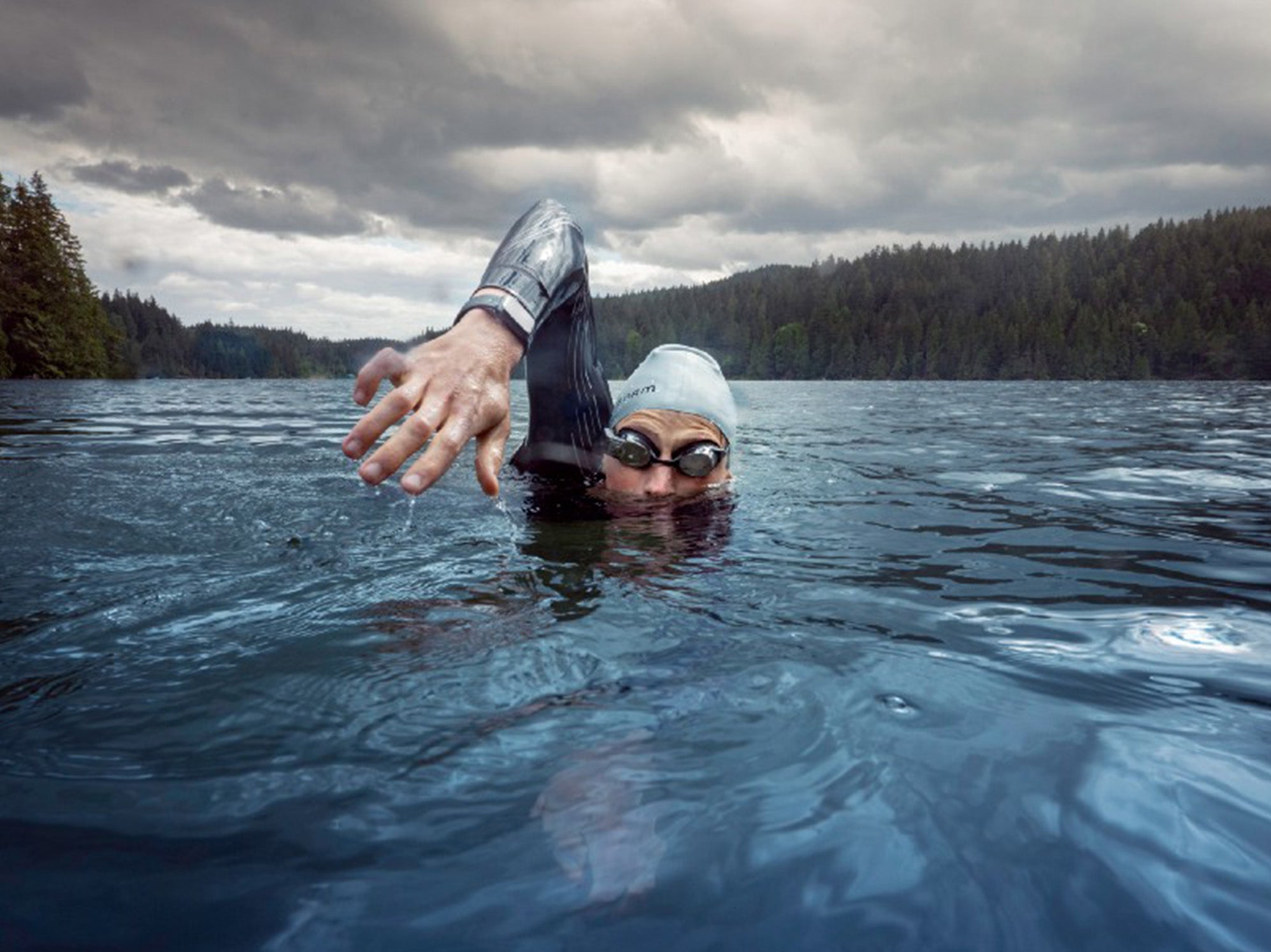5 Tips for Overcoming Open Water Swim Fears

For many triathletes, open water swimmers and simply, any swimmer looking for a pool alternative, training in open water — ocean, lake, or river — can trigger a sense of dread or trepidation jeopardizing a training day or, worse, throwing a race. This could mean simply swimming off course and overextending yourself as a result or in more heightened anxiety situations, it could mean panicked, irregular breathing that forces you to eject from a race. Thus, it is imperative that you work to remove these mental blocks to ensure an optimal, competitive mindset when your race day arrives. It will require time, patience and training but with a focused effort on improving swimming skills and mental toughness, it is within reach.
Below we discuss common worries and fears of open water swimming and some tips to help you overcome them.
Top 5 Most Common Open Water Fears
Of course, each athlete’s anxiety is different but the top 5 most common reasons swimmers fear open water swimming are:
1. Poor water clarity
Tea-colored lakes or cloudy oceans that obscure the depths make many uneasy as they have no idea what they are swimming over and whether there are obstacles in their way.

2. Deep, clear water
Conversely, the ability to see a bottom far beneath you can make some feel queasy and uneasy — a similar feeling to vertigo.
3. Water life
Many are made nervous by the idea they are not swimming alone but sharing the water with plant life, fish, seals etc.
4. Cold Water
Naturally, open water does not offer the controlled temperatures of a training pool and typically, run cooler. This can be intimidating to many.
5. Disorientation
Getting your swim bearings in open water can take some time. Not only is there an absence of pool comforts like floating lane markers and visual cues on the pool bottom, but there is also the unpredictability that comes with a natural body of water — currents, chop, swell etc.
5 Ways to Combat your Fear of Open Water Swimming
Employing standard methods of exposure therapy can typically help swimmers and triathletes overcome their fears of open water swimming. Identify what it is that makes you anxious, like the items listed above, and gradually expose yourself to the specific situation. This will, slowly but surely, reduce your negative response and enable you to stay calm.
1. Familiarize yourself with the area
If there is a lifeguard on duty, ask about the best and safest areas to swim and about plants and wildlife in the water. If not, simply scope out the area yourself identifying good entry and exit points. If possible, wade into shallow waters to observe water clarity and feel the water temperature. In addition, join open water swimming forums or Facebook groups and ask for advice and guidance on specific beaches, lakes and rivers.
2. Gear Up Properly
The key to comfort, safety and performance is wearing the right kit while open water swimming. This is largely determined by water temperature. In colder waters, make sure you wear a proper-fitting wetsuit of suitable thickness. It will keep your body temperature at safe levels, add buoyancy, reduce drag and protect you against sharp objects and other swimmers. Of course, durable, tight-fitting goggles are also a must. FORM’s Smart Swim Goggles are particularly advantageous as with our Open Water swim features on our goggles they provide you with key metrics like heart rate, time, distance, etc. — ideal when you are swimming alone or out of earshot from your coach.

3. Modify Technique
Swimming outside of the controlled pool environment typically requires triathletes and open water swimmers to modify their technique to compete with fluid conditions like chop, wind, and currents. We recommend adopting a punchier style with a quicker stroke turnover to compete with the natural forces at play. A faster, shorter stroke is key! This should deliver better stability and make you feel like you are in control of the situation.
4. Don’t Swim Alone
When competing, there are always safety officials and support personnel around, but when heading into open water to train, take at least one person — either a fellow swimmer or just someone who can act as a spotter. Alternatively, consider joining a swim or tri-club. Fellow members will be happy to share tips and offer swim companionship, support, and guidance.

5. Be Comfortable with Discomfort
Commit to regular open water swimming training sessions to gain familiarity with this type of swim. Start slow, follow the steps above and acknowledge the experience will be vastly different from a pool. By managing your expectations this way, you can eventually overcome the discomfort associated with open water swimming and adequately prepare your body and mind for swimming in an open water swimming race or a triathlon leg.
Rest assured, triathletes of all experience levels as well as open water swimmers, experience apprehension at one time or another. Even Triathlete Adam Goulet discussed his journey with overcoming open water swim anxiety. However, once you can mentally breakthrough your fears, the experience will be rewarding. Trust in your ability and plunge into that lake, ocean or river!










